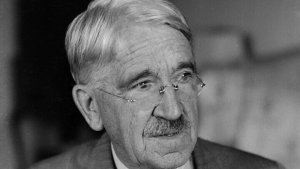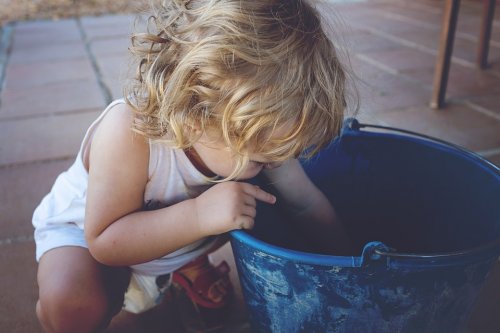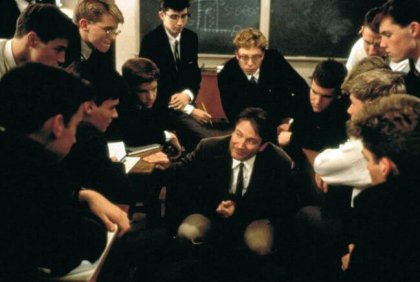Education Through the Amazing Eyes of John Dewey

John Dewey (1859-1952) is considered one of the most important educational psychologists in history. Also, his models in this field were part of the revolution of pedagogy in the last century. Even in current times, part of our educational system still isn’t up to date with Dewey’s contributions.
In this article, we’re going to talk about one of his classic works, his book “Experience and Education”. In this book, he shows the synthesis of his thinking about education. John Dewey always believed that people should be educated in democracy in order to find the method to achieve the critical thinking in students that would benefit society. To achieve this, Dewey spoke of 3 important principles to keep in mind in education: (a) the continuity of the experience, (b) social control, and (c) the nature of the experience.
The continuity of the experience
Dewey thinks that education and experience have an organic connection. With this, he meant to say that our experiences educate us. But this doesn’t mean that all experience is truly and equally as educational. Some of these experiences will serve as obstacles in our development, becoming “anti-educational.”

This is where Dewey’s concept of continuity of experience comes into play. An experience is “anti-educational” when it reverts the positive impact of previous experiences. Instead, it will favor education when experiences help you face subsequent experiences, achieving a continuous and enriching experience. For Dewey, achieving this continuity in positive experiences is essential for education.
The traditional education that we experience nowadays is full of experiences that hinder this continuity. How many students think that learning is tiresome and annoying? Unfortunately, school today is a source of anxiety for a big part of the student body. This, in turn, provokes an attitude that makes them reject possible educational experiences, which breaks the continuity of the experience.
Social control
An individual can’t learn on their own. Others can facilitate education (especially when it comes to children). It’s a social process. And because it implies a community, education needs rules to maintain the social control of educational activities. If these rules didn’t exist, there would be no activity. It’d be like trying to play a game without rules. It would lose all of its meaning.
What norms should these be and how should they be applied? Traditional school is based on the lack of firm regulations which prevent students from getting off track, regardless of whether this is more or less correct. Dewey observed that this type of social control generated a hierarchical relationship between teachers and students. Thus, the latter become passive parts of their education.
Dewey believed that social control should come from the situation. A flexible regulation that adapts to the students’ progress. Also, the circumstances of the teaching staff would be ideal. It’s important to keep in mind that the entire educational community should participate in education. The management of the regulation should be a joint venture between the teachers and the students in order to create a school environment that stimulates learning.
The nature of freedom
Whenever we talk about social control and regulations, the word freedom also comes up. It feels like when there’s greater social control, there’s less freedom, but that isn’t quite true. This will depend on the type of social control that’s exerted and the nature of the freedom at hand. John Dewey divides the concept of freedom into freedom of movement and freedom of thought.
Freedom of movement is the potential that allows us to perform any type of behavior. The greater the freedom of movement, the greater the range of possible behaviors. Freedom of thought is much more complex. It’s the ability to critically evaluate a situation and the options available to confront it. Thus, the greater the freedom of thought, the more options we’ll evaluate to determine our behavior.
Both types of freedom don’t have to go hand in hand. In fact, the freedom of movement may even coerce the freedom of thought. This is precisely what Dewey criticized about progressive schools. He thought that the objective of this school was the freedom of movement of its students. We shouldn’t give freedom of movement without keeping in mind their freedom of thought. Students can get carried away by their impulses and not ponder their options due to this.
An important aspect associated with this is that freedom should never be a goal. Freedom is a tool that helps students develop. If you give your students freedom of thought, they will be able to direct their experiences autonomously towards an educational continuity.

John Dewey’s education
John Dewey strongly criticized traditional educational models and also some of the progressive ones. He saw traditional models as rigid systems which had educational goals that were very different from his democratic principles. Also, Dewey felt that progressive models fell short in their initiatives and didn’t achieve their objectives.
Dewey never managed to create an ideal educational model. However, he was clear on the fact that, in order to improve the previous educational models, scientific and rigorous research in this field was necessary. Research that could fight the speculation that was so popular and which is still somehow thriving.
Through data collection in schools, we could see which changes are necessary. Thus, it’s a continuous process of application-research-application. And, with it, our system would take steps towards an educational system that is worthy and real. The underlying question of this approach is a complicated one. Is our current education based on scientific research or is it run by economic and political powers?
John Dewey (1859-1952) is considered one of the most important educational psychologists in history. Also, his models in this field were part of the revolution of pedagogy in the last century. Even in current times, part of our educational system still isn’t up to date with Dewey’s contributions.
In this article, we’re going to talk about one of his classic works, his book “Experience and Education”. In this book, he shows the synthesis of his thinking about education. John Dewey always believed that people should be educated in democracy in order to find the method to achieve the critical thinking in students that would benefit society. To achieve this, Dewey spoke of 3 important principles to keep in mind in education: (a) the continuity of the experience, (b) social control, and (c) the nature of the experience.
The continuity of the experience
Dewey thinks that education and experience have an organic connection. With this, he meant to say that our experiences educate us. But this doesn’t mean that all experience is truly and equally as educational. Some of these experiences will serve as obstacles in our development, becoming “anti-educational.”

This is where Dewey’s concept of continuity of experience comes into play. An experience is “anti-educational” when it reverts the positive impact of previous experiences. Instead, it will favor education when experiences help you face subsequent experiences, achieving a continuous and enriching experience. For Dewey, achieving this continuity in positive experiences is essential for education.
The traditional education that we experience nowadays is full of experiences that hinder this continuity. How many students think that learning is tiresome and annoying? Unfortunately, school today is a source of anxiety for a big part of the student body. This, in turn, provokes an attitude that makes them reject possible educational experiences, which breaks the continuity of the experience.
Social control
An individual can’t learn on their own. Others can facilitate education (especially when it comes to children). It’s a social process. And because it implies a community, education needs rules to maintain the social control of educational activities. If these rules didn’t exist, there would be no activity. It’d be like trying to play a game without rules. It would lose all of its meaning.
What norms should these be and how should they be applied? Traditional school is based on the lack of firm regulations which prevent students from getting off track, regardless of whether this is more or less correct. Dewey observed that this type of social control generated a hierarchical relationship between teachers and students. Thus, the latter become passive parts of their education.
Dewey believed that social control should come from the situation. A flexible regulation that adapts to the students’ progress. Also, the circumstances of the teaching staff would be ideal. It’s important to keep in mind that the entire educational community should participate in education. The management of the regulation should be a joint venture between the teachers and the students in order to create a school environment that stimulates learning.
The nature of freedom
Whenever we talk about social control and regulations, the word freedom also comes up. It feels like when there’s greater social control, there’s less freedom, but that isn’t quite true. This will depend on the type of social control that’s exerted and the nature of the freedom at hand. John Dewey divides the concept of freedom into freedom of movement and freedom of thought.
Freedom of movement is the potential that allows us to perform any type of behavior. The greater the freedom of movement, the greater the range of possible behaviors. Freedom of thought is much more complex. It’s the ability to critically evaluate a situation and the options available to confront it. Thus, the greater the freedom of thought, the more options we’ll evaluate to determine our behavior.
Both types of freedom don’t have to go hand in hand. In fact, the freedom of movement may even coerce the freedom of thought. This is precisely what Dewey criticized about progressive schools. He thought that the objective of this school was the freedom of movement of its students. We shouldn’t give freedom of movement without keeping in mind their freedom of thought. Students can get carried away by their impulses and not ponder their options due to this.
An important aspect associated with this is that freedom should never be a goal. Freedom is a tool that helps students develop. If you give your students freedom of thought, they will be able to direct their experiences autonomously towards an educational continuity.

John Dewey’s education
John Dewey strongly criticized traditional educational models and also some of the progressive ones. He saw traditional models as rigid systems which had educational goals that were very different from his democratic principles. Also, Dewey felt that progressive models fell short in their initiatives and didn’t achieve their objectives.
Dewey never managed to create an ideal educational model. However, he was clear on the fact that, in order to improve the previous educational models, scientific and rigorous research in this field was necessary. Research that could fight the speculation that was so popular and which is still somehow thriving.
Through data collection in schools, we could see which changes are necessary. Thus, it’s a continuous process of application-research-application. And, with it, our system would take steps towards an educational system that is worthy and real. The underlying question of this approach is a complicated one. Is our current education based on scientific research or is it run by economic and political powers?
This text is provided for informational purposes only and does not replace consultation with a professional. If in doubt, consult your specialist.







